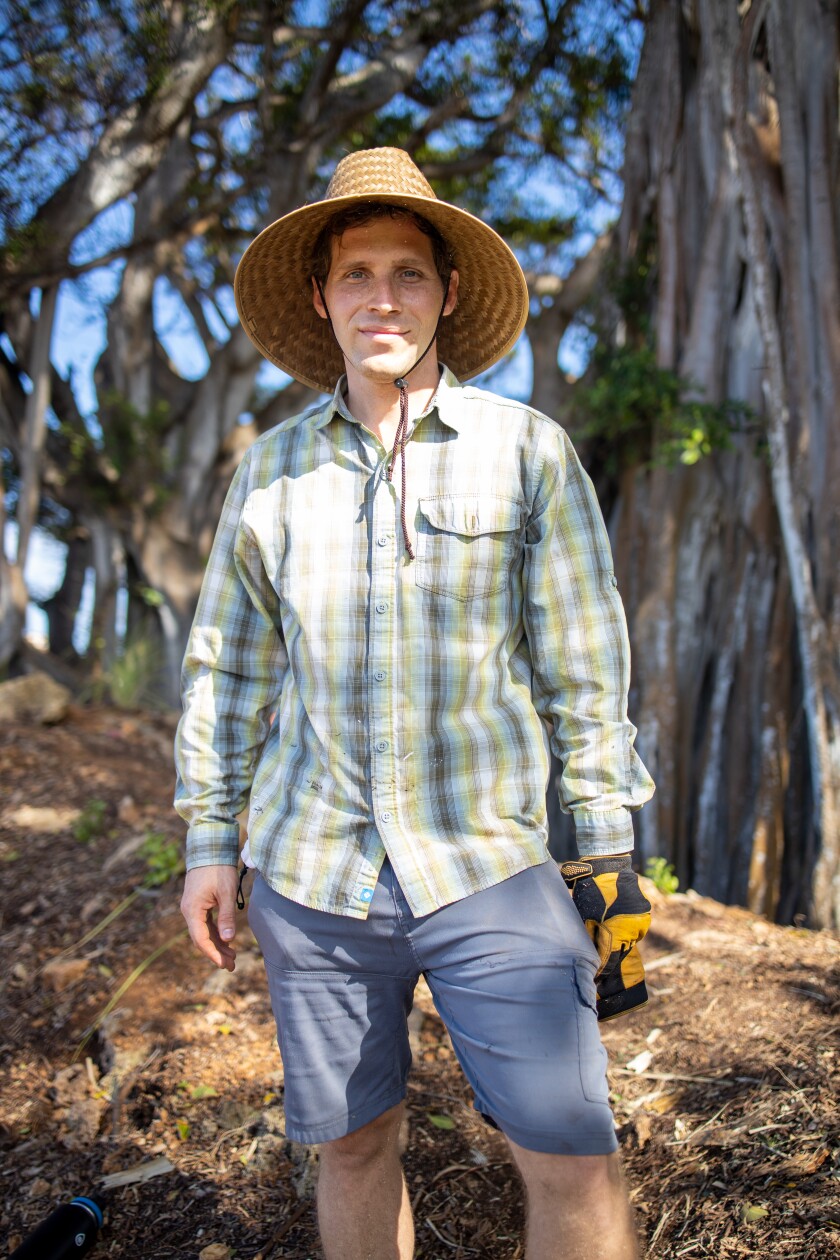
One of the ecological restorations taking place on Oahu is happening on the BYU–Hawaii campus. If all goes well, then one corner of campus, will look just how the island looked before European contact, said Dr. Spencer Ingley, assistant professor of the Faculty of Sciences.
If the project is successful, then it may be used as a starting point for reintroducing Hawaiian plants all over campus and Laie, Ingley said. Until then, however, be prepared to see a muddy field with students hard at work, pulling weeds and picking up trash, eagerly looking forward to the day when Hawaii’s natural splendor is restored.
He said it will be a beautiful sight, especially for newly arriving students who have not yet been introduced to Hawaii’s rich plant life.
“I have long been passionate about protecting and restoring native habitats,” Ingley said. “So much of what we see in landscaping around Hawaii, and even in most forests, is dominated by introduced plant species. Few people get to experience what Hawaii should look like.”
Dr. Ingley’s BIO 348 class and research students from BIO 496 are building a new native forest and wetland on campus, stocked with plants indigenous to Hawaii. The ecosystem will be behind the science building and will include several species of plants not currently found on campus, including some plants that are rare and at risk of extinction, Dr. Ingley explained. He said future plans for the forest and wetland include a walking path and an outdoor classroom.
“Native ecosystems provide many valuable services to both people and the environment, and I wanted to put that on display right here on campus,” Ingley said. As members of the BYUH ohana, he said people should care about the health and well-being of the environment. “I think this project can serve as an outward manifestation of that care.”
Ingley said he also wants to create an outdoor area that can be used for teaching, research and outreach. “I hope people will be able to come here for years to come, and it will inspire an appreciation for taking care of the land.”
The return of native plants and animals

The assortment of native plants that will be added to the wetland, many of which are only found in Hawaii, will provide research opportunities for BYUH’s biology tract students, especially as native insects and animals return to campus to make their homes in the new forest and wetland.
“It’s definitely a long-term project,” Ingley said, who predicted it will be several years before it’s fully completed. “We’ll do it in a couple courses and continue it until it’s done. But we want to get more of the University community involved.”
Before new plants can be added to the landscape, old plants must be removed, Ingley explained. Many of the plants on campus are not Hawaiian and invasive or detrimental to the native Hawaiian plants. The first phase of the project, using student labor to remove these unwanted plants as well as clearing out rubbish and litter, is mostly completed. Students have already started planting native plants, he said.
The restoration is not without its challenges, but Ingley said he is optimistic. “I’ve been really happy with the progress we’ve made so far this semester. We are only about a month into the project and we have a lot of the invasive plants removed and about 100 new native plants in the ground.
“The invasive weeds we are dealing with are tough, so it will certainly be a challenge to help our plants become established over the next year or so. Students in my Natural Resource Management Lab have been fantastic, and I look forward to involving other classes and University groups or clubs in the near future.”
Stewards of the local environment

Emri Trainor, a senior biology major from Colorado, referred to Doctrine and Covenants 104:13–15 when she said, “I think this ecological restoration gives us an opportunity to be stewards for the local environment.”
Bobby Senar, a freshman biology major from Papua New Guinea, said, “We’re defending the environment so it can look after us in the future. I have been dreaming of doing this project for a couple years now and have actually had previous classes help design what we’re doing,” he said.
Ingley said, “The COVID-19 crisis presented us with a great opportunity to get it started because we had some extra funds to jump-start the project, and having an outdoor lab experience right here on campus works well within the bounds of the restrictions we have for in-person classes.
“I had great support from the other faculty in my program, from my dean and from the President’s Council. They each reviewed my plans and approved them without any pushback. I am very grateful for their support.”
Looking to the future
In future semesters, Ingley said he plans to open up the project to clubs and service projects.
The new plants to look out for, he said, include four new trees: hala, loulu, koa and alahe’e. These new trees will exist with the hau and banyan trees that will be allowed to stay on the site.
The grass currently there will be replaced with pili grass and O’ahu sedge. Two new species of shrubs, the ‘ulei and the ‘a’ali’i, will also be planted. For ground cover, ‘ilie’e and ‘akia will be used.
Finally, the wetland section will include flowering akiohala and ‘ae’ae, as well as makaloa and aka’akai. Ingley said he hopes to also plant rare pu’uka’a and ahu’awa. He said the plants are currently being sourced from the native plant specialists at Hui Ku Maoli Ola, a plant nursery based in Kaneohe. Additionally, clippings and seeds are being gathered from the mountains behind Laie.
“Eventually, we hope for this plot to also serve as a sort of seed bank for restoration efforts happening in the mountains behind campus,” Ingley explained.
